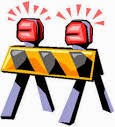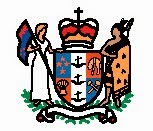 All too often, we take daily activities like ordering a coffee, shopping for groceries, reserving a taxi or calling to make a doctor's appointment for granted. For the thousands of Canadians with communication disabilities, these are all tasks that may present significant barriers that need to be overcome. There is a campaign across Canada to promote communication accessibility for those who have speech and language disabilities. In this issue, we will highlight some of the work that is being done by Communication Access Now (CAN) and how you can get involved.
All too often, we take daily activities like ordering a coffee, shopping for groceries, reserving a taxi or calling to make a doctor's appointment for granted. For the thousands of Canadians with communication disabilities, these are all tasks that may present significant barriers that need to be overcome. There is a campaign across Canada to promote communication accessibility for those who have speech and language disabilities. In this issue, we will highlight some of the work that is being done by Communication Access Now (CAN) and how you can get involved. People who use AAC have the right to access goods and services (including essential services like police, health care and legal) in the same way as everyone else. CAN's goal is to improve accessibility to goods and services, and to open up opportunities for all people who have speech and language disabilities. It is operated by Communication Disabilities Access Canada (CDAC).
What are some of the barriers?
Too often, people who have speech and language disabilities experience major challenges in receiving appropriate goods and services because those who are providing the services:
- May be afraid to talk to them
- May think they are hard of hearing
- May underestimate their abilities
- May not know how to communicate with them
- May not do simple things to provide access to services

CAN provides information, education and resources related to communication access for:
- Government, accessibility legislators and policy makers.
- Businesses, organizations and community services.
- People who have speech and language disabilities and their families.
Communication Access Symbol
Have you seen this symbol around? Do you want to know what it is all about?
The communication access symbol highlights the features of effective communication. Everyone benefits from effective communication, including people who have speech and language disabilities. The communication access symbol shows that communication:
- Involves two people
- Is about interaction
- Is about giving as well as receiving information
- Is about listening and watching
- Understand what you are saying
- Have you understand their messages
- Use the communication methods that work best for them such as speech, gestures, writing, pointing to objects or pictures, spelling words, typing on a communication device or human assistance
- Read and understand your written information
- Sign documents and complete forms in ways that are accessible for them
Six Things to Know about Communication Access:
- Communication access is good for everyone, including people who have speech and language disabilities.
- Organizations are legally obliged to provide accessible services including accessible communication.
- Access is more than getting into a building or having documents in alternate formats. It is also about how people interact, understand and express their thoughts.
- Businesses and organizations can do simple things so that customers, patients and clients can communicate effectively with them.
- Lack of effective communication can result in serious consequences, especially in essential health, legal and justice services.
- In critical communication services, communication access means having protocols, staff training, communication assistance services and communication tools.

Join the discussion on Facebook
https://www.facebook.com/pages/Communication-Disabilities-Access-Canada/167031386664276
I Can.....Move on to New Challenges!

“Too often we underestimate the power of a touch, a smile, a kind word, a listening ear, an honest compliment, or the smallest act of caring, all of which have the potential to turn a life around.”
Leo Buscaglia
We would like to extend our gratitude and heartfelt thanks to someone who has touched the lives of many of our children and families in the Augmentative Communication Service here at Thames Valley Children's Centre. Kristel Pallant is an Occupational Therapist who worked in ACS for many years. Kristel was one of the original team who started the I Can Blog (back then a humble newsletter!) back in May 2007, and worked tirelessly to move it into a blog format. This June, Kristel decided to take on some new challenges in another position at the Centre. We miss her in Augmentative Communication, but wish Kristel the best of luck in her new adventures!
Lights, Camera, Action!!!


No comments:
Post a Comment